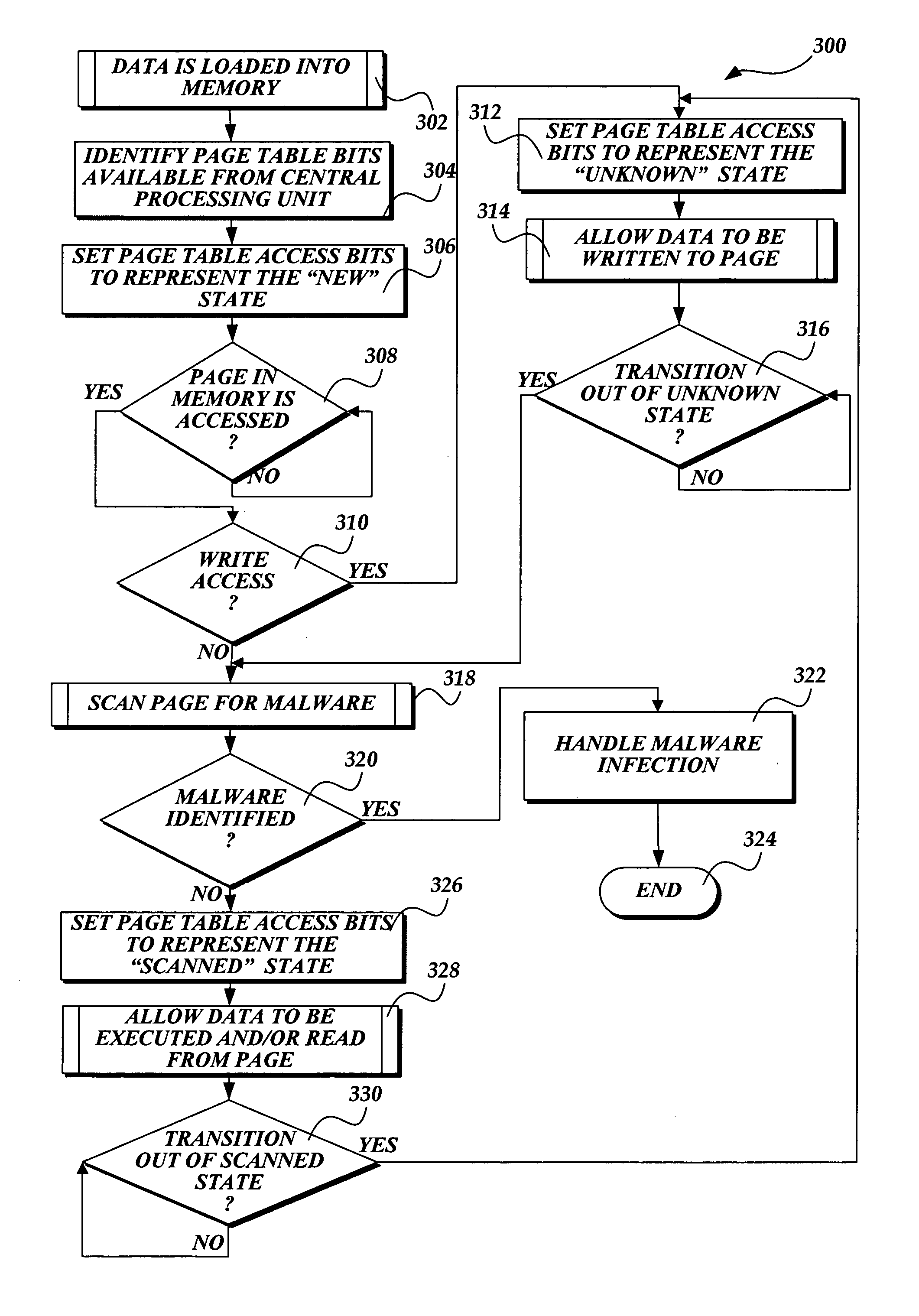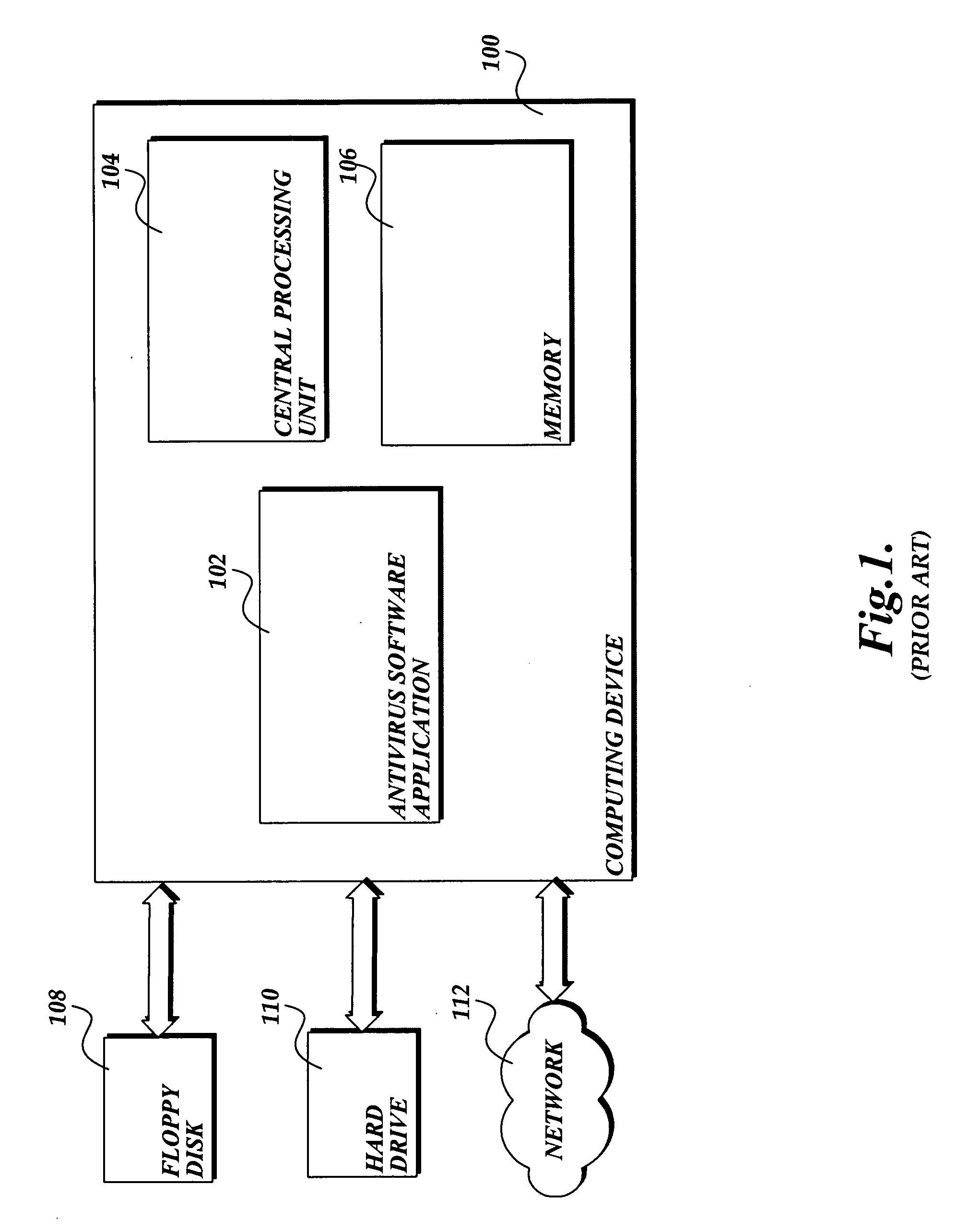On-access scan of memory for malware
a malware and memory technology, applied in the field of computing devices, can solve the problems of compromising the integrity of the page, affecting the performance of antivirus software, and the state of the page is not safe, so as to achieve effective infrastructure, improve the performance of antivirus software, and improve the effect of identifying infrastructur
- Summary
- Abstract
- Description
- Claims
- Application Information
AI Technical Summary
Benefits of technology
Problems solved by technology
Method used
Image
Examples
Embodiment Construction
[0025] The present invention provides a system, method, and computer-readable medium for identifying malware that is loaded in the memory of a computing device. Software routines implemented by the present invention track the state of pages loaded in memory using page table access bits available from a central processing unit. A page in memory may be in a state that is unsafe or potentially infected with malware. In this instance, the present invention calls a scan engine to search the page for malware before the page with unsafe information is read and / or executed. If the scan engine does not identify malware, the page transitions into a state that is safe. In this instance, information on the page that is in the safe state may be read and / or executed without the page changing states. However if new information is written to a page, the page will transition back to a state that is unsafe. Thus, pages that are modified as a result of program execution or pages that are “hijacked” by...
PUM
 Login to View More
Login to View More Abstract
Description
Claims
Application Information
 Login to View More
Login to View More - R&D
- Intellectual Property
- Life Sciences
- Materials
- Tech Scout
- Unparalleled Data Quality
- Higher Quality Content
- 60% Fewer Hallucinations
Browse by: Latest US Patents, China's latest patents, Technical Efficacy Thesaurus, Application Domain, Technology Topic, Popular Technical Reports.
© 2025 PatSnap. All rights reserved.Legal|Privacy policy|Modern Slavery Act Transparency Statement|Sitemap|About US| Contact US: help@patsnap.com



